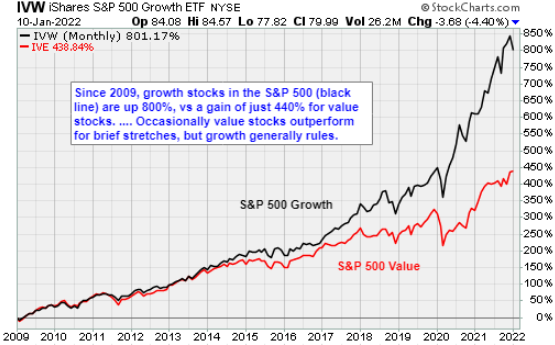The S&P 500 (SPX) finished at 4,670 on Monday, a decline of just 0.1%. It could have been much worse, asserts Jon Markman, tech sector expert and editor of Strategic Advantage.
The benchmark S&P traded all the way down to 4,582 before profit-taking among bears turned into a full short-covering panic. The biggest rallies occur in bearish phases. The reason is simple. Vertical declines create vacuums as willing sellers dry up.
That’s a problem for bears. They need liquidity to buy back short positions to crystallize profits. If the S&P 500 can open above 4,680 on Tuesday, there is a good chance that frantic short-covering among bears will push the index well through 4,700.
The real test will come later in the Tuesday session when actual sellers get their first opportunity in five days to sell into a stronger stock market. There is critical support for the benchmark at 4,550. Resistance is 4,750.
In case you are keeping score at home, you might have noticed that at its morning low, the Nasdaq Composite was down 10.3% from its record intraday high in late November. That constitutes a “correction” in Wall Street jargon, which could be coded into hedge fund trading models as a waypoint for a powerful reversal.
The reality though, is that you don’t really know if it was a correction or just a stop along the way to a bear market until you can look over your shoulder in a few months. I realize that’s not super-helpful, but it’s something to keep in mind.
Details
The Nasdaq (NASDX) rose 0.14% after previously being down 1.99%, a huge intraday reversal. The Dow fell 0.4%, but that was also a big reversal from the morning.
Breadth favored decliners 5-2, and there were 1005 new lows vs 202 new highs, a very oversold condition. Big caps on the new high list included Berkshire Hathaway (BRK-B), Bank of America (BAC), Pepsi (PEP), Chevron (CVX), and Wells Fargo (WFC).

All sectors but tech and health care ended in the red. The 10-year US Treasury yield was up less than one basis point to 1.77% after touching 1.81% earlier in the session, its highest intraday level since January 2020. The 10-year yield, which ended last year at 1.52%, surged to about 1.76% by the end of last week, a 24 basis-point jump in just five days.
"The speed of rate moves matters for equity returns," Goldman analysts said in a research note. "Equities typically struggle when the five-day or one-month change in nominal or real rates is greater than two standard deviations. The magnitude of the recent yield backup qualifies as a two-plus standard deviation event in both cases."
In company news, Moderna (MRNA) said advanced purchase agreements for 2022 delivery rose to $18.5 billion, up from $17 billion previously. Shares of the vaccine maker, whose product sales for 2021 hit $17.5 billion, surged 9.2% intraday, the most on S&P 500 and Nasdaq.
Take-Two Interactive Software (TTWO) said it struck a deal to acquire Zynga (ZNGA) for $9.86 per share in a cash-and-stock deal that values the mobile game developer at $12.7 billion. Shares of Take-Two Interactive plummeted 13% intraday, the worst performer on Nasdaq.





















